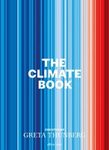![Antarctic Meteorology and Climatology Antarctic Meteorology and Climatology]()
Click to have a closer look
About this book
Contents
Customer reviews
Related titles
About this book
Describes the climate in the Antarctic, the processes by which it is maintained, and reviews our current knowledge of the variability of Antarctic climate and the possible effects of `greenhouse' warming. The instruments used in Antarctic climatological measurements are reviewed, with an emphasis on the role of remote sensing from satellites.
Originally published in 1997.
Contents
Preface; 1. Introduction; 2. Observations and instrumentation; 3. Physical climatology; 4. The large-scale circulation of the Antarctic atmosphere; 5. Synoptic-scale weather systems and fronts; 6. Mesoscale systems and processes; 7. Climate variability and change; Appendices; References; Index.
Customer Reviews
By: JC King and J Turner
409 pages, Figs, tabs
'This volume will be of greatest interest to meteorologists and climatologists with a special interest in Antarctica and the Southern Ocean, but it will also appeal to researchers in glaciology, oceanography and biology.' Weather 'This outstanding publication presents a comprehensive analysis of Antarctic climatology and meteorology . The authors are highly qualified, and their writing is very effective. An excellently produced book ... [aimed at] upper-division undergraduates through [to] professionals.' J. D. Ives, Choice 'In summary, the authors are to be congratulated on both the breadth and depth of the volume. It can be thoroughly recommended as a milestone in Antarctic meteorology and as an excellent text for students and researchers in the field.' N. A. Streten, World Meteorological Organization Bulletin 'In summary, this is a valuable and long-awaited overview of Antarctic meteorology and climatology. It will be an essential background reference for meteorological professionals specialising in the region.' Ian Allison, Australian Meteorological Magazine 'To summarize, King and Turner have done a good job in reviewing the developments in Antarctic weather and climate during the period 1985-1994, and are to be congratulated on their effort. The book is well produced, of sturdy construction, and is reasonably priced in relation to similar offerings. This book is strongly recommended for the polar scientist who wants to gain an appreciation of modern Antarctic atmospheric investigations, as much of the material does not require an in-depth knowledge of meteorology to be understandable. All polar libraries should have a copy, and even more general science libraries could benefit from its acquisition.' David H. Bromwich, Polar Record





































